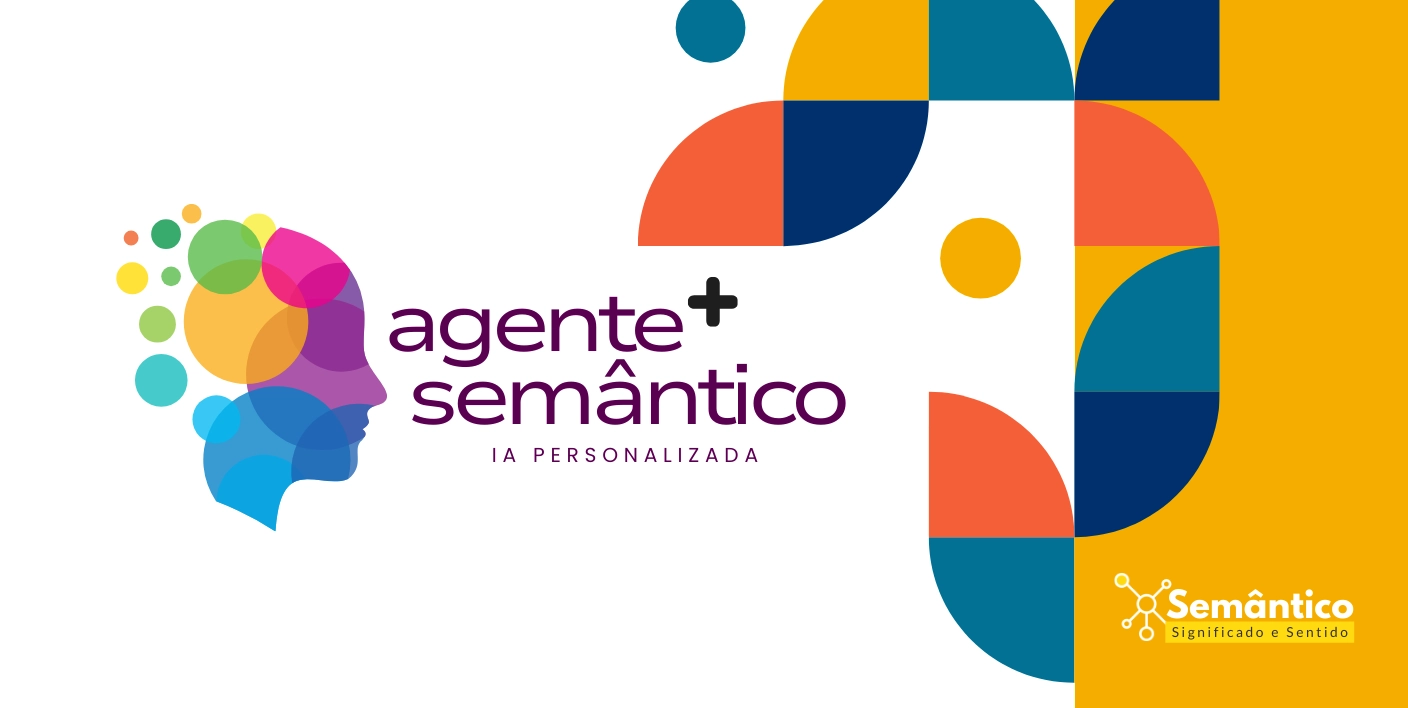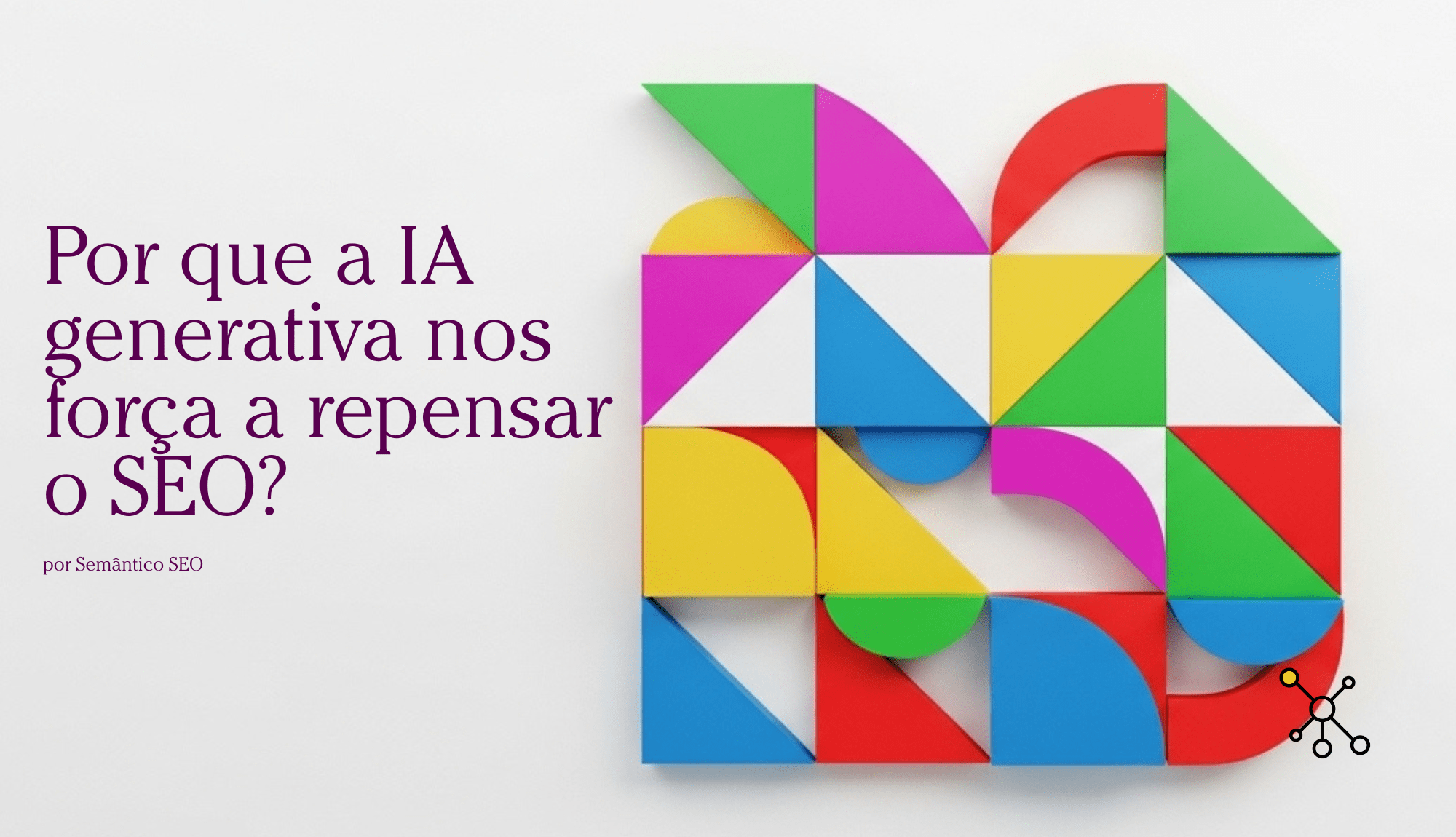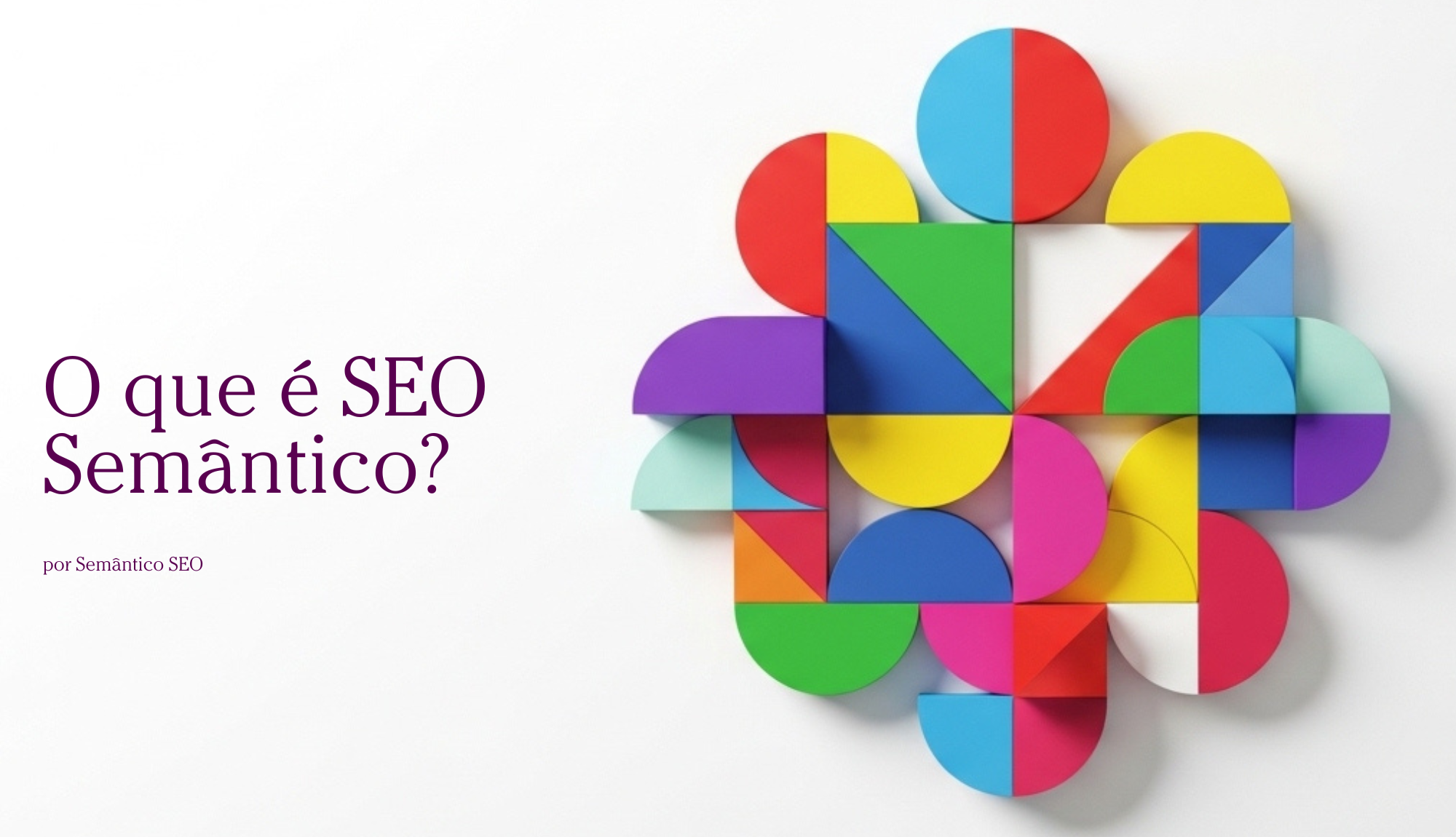Resolving semantic ambiguity
If you've arrived at this article, you probably work in SEO, perhaps you received my link on LinkedIn, or the network recommended it to you. And if you clicked and got here, reading an article with this title, discussing ambiguity , you're interested in solving problems that go beyond knowledge , problems that connect with linguistics, information science , and technology science.
Listen to an audio summary created with NotebookLM, offering a fresh perspective on this article you just started reading:
We all know that human communication is intricate; I like to think of it as a tapestry of senses and meanings, woven every day with fine threads of subtlety, context , and intention. This image formed in my mind after I played a video game called South of Midnight . In that game, there's the concept of Weaving, which are like invisible threads that connect us and are interrupted or blocked by our traumas.
Another very important concept in this same subject, but viewed from a different perspective, is "Intertangled," coined by the philosopher and sociologist Theodor Holm Nelson , or Ted Nelson. This term was created to express how complex the interrelationships of human knowledge are.
Nelson wrote in Computer Lib/Dream Machines (Nelson 1974, p. DM45) 1 : “EVERYTHING IS DEEPLY INTERCONNECTED. This is important because it raises the debate that there are no “subjects”; but only knowledge. If you cannot clearly and definitively separate the numerous topics of the Worlds (of ideas, tacit knowledge and others), since the interconnections link them inseparably and ever more deeply intricately.
Fields of knowledge such as semantics , linguistics , semiotics , and library science attempt, in different ways, to understand and create methods to minimize this semantic problem, using different techniques with a common goal: to reduce uncertainty and ambiguity.
Let's go back to my definition of Human Communication: A tapestry of senses and meanings, woven every day with fine threads of subtlety, context, and intention. I wrote that sentence on purpose; it contains words that can represent very different meanings from one another. I'm sure you understood what I meant, right?
But Google 's algorithm will have a little more difficulty than we do in understanding the real meanings.
Understanding a complex network of meanings
Returning to our objective, we need to understand that at the core of this complex network of meanings, we find a phenomenon that is both fascinating and challenging: ambiguity. It's interesting to note that ambiguity is not a flaw, but a characteristic inherent to our language, reinforcing two qualities that have always made us dependent on it: flexibility and richness.
However, when we transfer this communication to the digital , where interaction is now mediated by algorithms and artificial intelligence , things get very complicated. What is nuance for a human being can become an insurmountable obstacle for a machine. And if you read my articles, you already know why.

The intersection between technology and linguistics: SEO
It is precisely at this intersection between linguistics and technology that Semantic SEO comes to our rescue, not just as a discipline, but as a complete strategy. Understanding ambiguity is the first step to overcoming it; studying the workings of technological tools and their processes for dealing with language is the next step; transforming potential communication noise into bridges of clear meaning is our ultimate goal. It is increasingly necessary to produce content that both our audiences (algorithms and people) can access and consume.
Linguistics teaches us that semantic ambiguity is a language phenomenon that occurs when a word, phrase, or sentence can be interpreted with more than one meaning. Belonging to the field of semantics, the study of meaning in language, this duality of meaning does not reside in a flawed grammatical structure, as I have already said, but rather in the words themselves and their relationships, making comprehension dependent on context, the interlocutor's world knowledge, and pragmatic clues for its correct deciphering.
This is the main reason why I keep repeating that words are merely representatives of entities , concepts, and ideas; and therefore it is a terrible choice to use them as a source for SEO strategies.
Returning to linguistics, we see that semantic ambiguity, also known as polysemy or homonymy, is an inherent and common characteristic of natural languages, the ones spoken by human beings.
A classic example is the word "manga," which can refer to both the fruit and a part of a garment. Another example in the same sense is the word Puma, which can be a feline, a brand, or a football team in Mexico, a nickname given by the fans to Club Universidad Nacional AC.
Another example can be seen in the phrase "He saw the man with the binoculars," which could mean that he used binoculars to see the man or that the man he saw owned binoculars.
And how do we humans solve this problem? For us, resolving these ambiguities depends on the human capacity to infer the most probable meaning from the context in which the communication occurs. What we were talking about before, information I already know about the subject or about the person who is speaking, analogies I make based on my prior knowledge, and many other things.
In the field of technology, especially in areas such as Natural Language Processing (NLP) and artificial intelligence, semantic ambiguity is one of the biggest challenges that are continually being targeted for the development of strategies to reduce its impact.
Computer systems, unlike humans, do not possess the same intuitive capacity for disambiguation. The task of "word sense disambiguation" (WSD) is a very active field of research (imagine its importance today) that seeks to develop algorithms capable of identifying the correct meaning of a word in a given context. Failure to resolve this ambiguity can lead to errors in automatic translators, virtual assistants, and search systems.
The technological solution to ambiguity uses two assets:
- a dictionary, used to specify the meanings to be disambiguated;
- and a corpus of linguistic data to be disambiguated;
We can understand a corpora of linguistic data as a massive volume of text (hence the name Large Language Model). The WSD technique has two variants:
- Lexical sample: disambiguation of occurrences of a small sample of previously selected target words;
- All words: disambiguation of all words in a continuous text.
The "all words" task is generally considered a more realistic form of evaluation, but the corpus is more expensive to produce because human annotators need to read the definitions of each word sequentially whenever they need to make a marking judgment, rather than once for a block of instances of the same focus word. To mitigate these problems, developers employ large volumes of data (corpora) and machine learning techniques.
Language models are trained to recognize patterns and associations between words, allowing the system to infer the most plausible meaning. The accuracy of these systems is one of the most sensitive points in the evolution of human-computer interaction. All efforts seem to be moving towards making communication with machines as fluid and natural as communication between people.
And this is where it starts to interest me, when it talks about human-computer communication, it gets to information management and retrieval, and that's what SEO is all about. Therefore, I wrote this article to delve deeper into this labyrinth of multiple meanings, to explore how ambiguity impacts information retrieval and how Semantic SEO has become a valuable tool for guiding algorithms towards clarity.
The central problem: semantic ambiguity and information retrieval.
To understand the magnitude of the challenge, we need to return to a fundamental concept in information science: Information Retrieval (IR) . At its core, a search engine like Google is a gigantic IR system. Its primary objective is to understand an informational need, expressed by a user through a query, and return a set of documents ordered by relevance that satisfy that need. Sounds simple when put that way, right? But it's not.
The problem is that "need" is a human concept, laden with context, while "consultation" is, initially, just a sequence of characters. The bridge between these two worlds is not always ready, or has even been built, and this is where the ambiguity manifests itself.
When words deceive
In the world of SEO, there is a Cost of Uncertainty (CI), generated by ambiguity, which is not merely a theoretical exercise; it has direct and measurable impacts on a website .
The cost of uncertainty encompasses the economic and social losses caused by a lack of predictability in various areas, such as economics, politics, and science. In the economic context, uncertainty can lead to more conservative investment decisions, reduced consumption, and a slowdown in economic activity.
In the context of web searches, when a search algorithm fails to decipher the intent behind a query, it attempts to offer a range of possibilities, which dilutes the relevance of the results and harms the experience . This generates poor results, user dissatisfaction, and reduced trust in search engines and websites.
Ambiguity is a multifaceted and complex problem; to begin to glimpse a solution, it is first necessary to dissect it into its parts. To do this, let's consider some classic examples that illustrate this complexity:
Lexical Ambiguity (Homonymy/Polysemy)
The word "bank" is a perfect example. It could be a financial institution, a park seat, a database, or a sandbank. Without additional context, a search engine faces a substantial difficulty. If a user searches for "how to open a bank account," the intention is clear. But if the search is simply "bank at Praça 15," the algorithm needs clues to avoid displaying results about the Banco do Brasil located at Praça 15 near my house.
Syntactic Ambiguity
The sentence structure can generate multiple meanings. The sentence "The tourist photographed the guard with the camera" is ambiguous. Did the tourist use the camera to take the picture, or was the guard holding a camera? For a human, the first scenario is more likely, but an algorithm needs to analyze large-scale patterns to reach that conclusion. That's why Google uses machine learning in its search.
Referential Ambiguity
This occurs when a pronoun can refer to more than one noun. In "The car hit the pole, and it was destroyed," does the pronoun "it" refer to the car or the pole?
For SEO professionals, who focus on keywords, this uncertainty is disastrous. Optimizing a page for the term "bank" without specifying the context is like using a cannon to hit a fly. A keyword , as a representative of an entity, can have multiple meanings that machines have great difficulty understanding. Complicating the lives of algorithms has always been a terrible idea. Furthermore, the result of this strategy has led to the scenario we see today: content that may attract traffic, but unqualified traffic that won't find what it's looking for, generating negative signals for the search engine.
The Impact on User Signals and SEO Metrics
Modern algorithms, such as Google's, are extremely sophisticated and use user behavior as a signal of quality and relevance. There are algorithms specialized in hyper-personalizing search, which take multiple factors into account.
Andrea Volpini shared some interesting findings about this on LinkedIn:
Notice how techniques previously used only in AI Overview are now being used in "standard search." This is directly related to our topic: ambiguity, which directly impacts these signals.
Pogo-sticking
This occurs when a user clicks on a result, realizes it's not what they were looking for, and immediately returns to the results page to choose another option. This is a very strong signal to the search engine that the first result did not satisfy the search intent. A carpentry website that ranks for "bank" and receives clicks from people searching for financial services will have a high rate of pogo-sticking.
Therefore, writing about trending topics on the internet that have absolutely no relation to your service or product is a terrible idea. You'll flood your server with people who aren't interested in anything you offer. On top of that, they'll send a message to search engines: this isn't the site I'm looking for.
Short dwell time
Similar to pogo-sticking, if a user enters a page and leaves quickly, this indicates that the content was not what they expected. Ambiguity is a frequent cause of this negative metric.
Low conversion rate
The ultimate goal of any SEO project is to bring interested visitors to the website, and this has a direct impact on conversion. Unqualified traffic, attracted by ambiguous terms, rarely converts, whether into sales, leads, or any other valuable action. Your CRO friend won't be happy with you.
Therefore, semantic ambiguity is not just a linguistic or technological problem; it's a business problem. It generates a frustrating user experience and sends negative signals to search engines, which in turn can lower the site's ranking, creating a vicious cycle of irrelevance.
To overcome this challenge, it is necessary to have an SEO strategy aimed at long-term success.
Semantic SEO as a strategy
If SEO traditionally got lost in the intricate threads of ambiguity by focusing on keywords (mere sequences of characters), Semantic SEO emerges as Ariadne's thread straight from the myth of Theseus, offering us a safe route to navigate this labyrinth and arrive at meaning.

The paradigm shift is significant: we've moved away from optimization focused on "what the user types" and towards optimization based on "what the user means."
If you search for "Semantic SEO" on the web, you'll see very varied definitions, many created solely for ranking purposes, and which mix keywords with semantics. My definition of the practice of Semantic SEO is this:
Semantic SEO is the practice of optimizing online content through strategies that define a semantic field for your business and connect data, information, and content so that your business makes sense within that context.
Alexander Rodrigues Silva
But it's more than that; it's a business strategy that needs to be connected to the overall business strategy. To make this tangible, we need to practice it with a new way of optimizing content, focusing on the relevant entities and topics covered in any web document. We can think of it as a way to build a robust context around a theme, using a rich vocabulary and establishing clear relationships between the information.
The goal is to allow search engine algorithms not only to index the text, but to understand it at a near-human level.
The Power of Context and Intention
The foundation of Semantic SEO lies in the understanding that words rarely exist in a vacuum. Meaning is constructed by the words that surround them. Modern algorithms, such as Google's BERT (Bidirectional Encoder Representations from Transformers), are specifically designed to analyze language bidirectionally, understanding how each word in a sentence relates to the others.
This means that, when creating content, the strategy shifts from exhaustively repeating a keyword to building a semantic field . If we are writing about "mango" (the fruit), it is essential that the text contains related terms such as "tropical fruit," "juice," "vitamin C," "sweet," "pit," "peel." This network of related terms provides the algorithm with the necessary context to disambiguate the term and understand that the document does not refer to a piece of clothing.
The great advantage of this approach is its alignment with the search intent . By focusing on the topic holistically, we naturally answer a wider range of related questions and needs, from the most generic ("what is mango?") to the most specific ("health benefits of mango").
That's why, whenever possible, in projects using Semantic SEO, we choose to use content creators who are experts in the site's field of knowledge. When someone with a background in finance writes on a blog about investments, they naturally use the specific vocabulary of that field. I don't need to guide or edit that; it comes naturally from the expert's exposure to the subject they master.
Clarity tools: structured data, taxonomies, and ontologies
To assist algorithms in this task of understanding, I developed the Semantic Workflow , which arose naturally from my work applying the Semantic SEO strategy. I started with some very interesting tools that helped me to clarify the meaning and structure of the information we were putting on the web in the form of posts.
Structured data
If the content of a page is a narrative, structured data is the footnotes for the robot. Using a vocabulary like Schema.org , we can "label" pieces of information, explicitly telling the search engine: "This is a recipe," "This is a product," "This is a person," "This is an organization." This tagging eliminates the need for the algorithm to infer the type of content, drastically reducing ambiguity. A phone number tagged as telephone will not be confused with a postal code. The name "Alexander Rodrigues" tagged as Person is unequivocally a person.
Taxonomies
Organization is a pillar of clarity. A taxonomy on a website acts as a map for search engines. The way we organize information into categories, how it is expressed in the overall information architecture, helps establish hierarchies and their relationships.
My website is built on this structure: "Semantic SEO" is a subcategory of "SEO," which in turn is within "Digital Marketing." With this, I try to structure my content logically, seeking to help algorithms understand my content and its relationship to the domain of knowledge as a whole, reinforcing the meaning of each individual page.
Ontologies
If taxonomy organizes, ontology defines. An ontology is a formal model of knowledge that not only lists the concepts of a domain, but defines the properties and relationships between them. For example, a film ontology might define that "a director directs a film" and that "an actor acts in a film." These rules allow systems to make inferences.
For SEO purposes, building content aligned with an ontology (even an implicit one) means creating a logically connected network of information, which is exactly what algorithms like Knowledge Graph look for.
By combining the creation of contextualized content with the technical implementation of structured data and a well-defined information architecture, Semantic SEO provides search engines with a clear and precise roadmap to navigate our content, overcoming the barrier of ambiguity and delivering the correct meaning to the end user. It is the thread that pulls the algorithm out of the labyrinth of my content.
From theory to action: the Semantic Workflow
Understanding the concepts of entity, context, and structured data is the first step, but true transformation occurs when we integrate these principles into a practical and replicable process. It is precisely to bridge this gap between the "what" and the "how" that I developed the methodology presented in my book, "Semantic SEO – Semantic Workflow" .
The eBook Semantic SEO – Semantic Workflow was written as a proposed work methodology that connects the most modern SEO practices with Information Science and Library Science, describing the use of taxonomies and ontologies in optimizing websites for search engines in a semantic way, known as Semantic SEO.
This book is not just a manual on SEO; it's a proposal for a new work paradigm, a methodology that connects the most modern aspects of search engine optimization with the solid foundations of Information Science and Library Science. The methodology predates the book and stems from my perception that the challenges faced by modern SEO, such as the ambiguity we address here, have been the subject of study for decades in fields dedicated to knowledge organization.

The convergence between SEO and Information Science
Does the “Semantic Workflow” suggest that SEO professionals adopt the mindset of an information architect or a digital librarian? No, it's a practical process, but it invites you to think outside the box. Instead of just chasing high-volume keywords, the work begins with a deep domain analysis to understand the fundamental concepts of a business area.
The methodology is based on some essential pillars:
Domain Modeling and Meaning-Making
Before writing a single line, the workflow proposes extensive research to identify the domain of knowledge to which the site belongs and the creation of a series of artifacts that help us identify and define the central entities for the business. No keyword research, no competitor analysis, no looking outwards; on the contrary, looking inwards at the business to understand what it wants and needs to say to the world.
Construction of controlled vocabularies and taxonomies
Just as a library organizes its collection to facilitate discovery, a website needs a logical structure. The flow details the process of creating taxonomies that not only improve the browsing but also serve as a semantic framework for the content and help search engines understand what we publish.
Creating enterprise ontologies
The important step, but one that is limited to highly complex projects, is defining the relationships between these entities. If we think about e-commerce, a "product" has a "manufacturer," is sold by a "company," has "characteristics," and receives "reviews" from "customers." Mapping these relationships creates a robust and coherent knowledge base about the business. With this map, we can generate graphs , integrate with systems via JSON and APIs, and much more.
By following the Semantic Workflow, content creation ceases to be a reactive activity, based on momentary search trends, and becomes a proactive activity of building a knowledge graph . Each piece of content, each page, becomes a node in this graph, meaningfully interconnected with the others and the entities.
Fluxo has been my practical guide to transforming a website from a collection of isolated pages into an organized knowledge base, where ambiguity is systematically reduced through planned information architecture and explicit data markup. It's the direct application of Library Science principles to solve one of the most critical problems in contemporary SEO.
The decisive role of entities
We finally arrive at the concept that represents the most elegant and lasting solution to the problem of ambiguity: the entity . This is a term that designates any "thing" that possesses a distinct and identifiable existence, whether concrete, abstract, real, or conceptual.
In its broadest sense, an entity is a being, an object, an organization, or a concept that can be recognized as an individual unit, separate from others. This existence does not necessarily depend on a physical form; ideas, feelings, organizations , and mathematical concepts are also considered entities, as they can be defined, described, and treated as subjects or objects of thought and action.
In the context of Semantic SEO and the Semantic Web , an entity is much more than a word; it is the representation of a concept, of a "thing" in the real world, that is unique, identifiable, and possesses a set of attributes and relationships.
In SEO projects, entities are generally used to identify individually identifiable objects and/or people. Individual properties can be assigned to them:
- Fiat = motor vehicle
- color = red
- engine = combustion
- Johann Wolfgang von Goethe = writer
- Nationality = German
- Date of birth = August 28, 1749
- Zugspitze = mountain
- Location = Germany
- altitude = 2962 meters
The set of entities of an entity type is called an entity set, and depending on the selection it may include all, only some, or none of the entities. Entities as elements of an entity set are distinguished by their properties (attribute values).
Each entity in a group of entities is distinguished from others of the same type by a unique value of an identifying attribute or a combination of attributes (for example, the chassis number for a single car or the license plate number for a single registration). This attribute or combination of attributes is called an identifier, or ID for short.
A keyword like “Da Vinci” is ambiguous. It could be the Renaissance genius, a restaurant in your city, a movie, or a book. However, the entity “Leonardo da Vinci” (identified in Wikidata, for example, by the code Q762) is unique. It unequivocally refers to the Italian artist and inventor, and is connected to attributes (date of birth, place of death, profession) and relationships (painted the “Mona Lisa”, was an apprentice of “Andrea del Verrocchio”).
From Strings to Things: Knowledge Graph
Google's major breakthrough, later adopted by other modern search engines, was the transition from a page index text strings things and their relationships). Google's Knowledge Graph is, in essence, a gigantic database of entities.
When a user performs a search, the algorithm is no longer just trying to match words. First, it attempts to identify the entities present in the query. In the search "who painted the Mona Lisa," Google recognizes two entities: the person (functioning as "painter") being searched for and the artwork "Mona Lisa." In its graph, it finds the relationship "painted by" that connects "Mona Lisa" to "Leonardo da Vinci" and delivers the answer directly and unequivocally.
The Power of the Knowledge Graph
This is where the importance of using entities becomes irreversible. When we optimize our content around entities, we are, in practice, feeding these knowledge graphs. We are speaking the native language of algorithms and their search engines.
By adopting an entity-focused strategy, we solve the problem of ambiguity at its root. We stop offering algorithms text open to multiple interpretations and start delivering a set of clear and well-defined facts and relationships. This clarity not only dramatically improves Google's ability to understand and rank our content, but also builds a more resilient SEO foundation, less susceptible to algorithmic fluctuations and focused on what really matters: meaning.
Leaving the labyrinth of ambiguity
Trying to understand and resolve semantic ambiguity took me back to my college days, when I was studying Literature. I returned to the roots of linguistics, but bringing with me my newly acquired knowledge of artificial intelligence. Remembering how a natural phenomenon of human communication becomes a substantial obstacle in the digital world, directly impacting how information is found and consumed, made me reconnect with things I loved learning but thought I wouldn't use anymore after leaving Literature.
The answer, as I have tried to explain and exemplify, lies not in simplifying the language, but in enriching it with structure and meaning. Semantic SEO, with its arsenal of research, analysis, structured data, taxonomies, graphs, and ontologies, offers the tools to build a robust context, transforming web pages into documents that are intelligible to both humans and machines.
The methodology proposed in "Semantic SEO - Semantic Workflow" is my invitation for you to escape the labyrinth of ambiguity with greater certainty, proactively building knowledge ecosystems that are logically cohesive and semantically rich.
At the end of this journey of a Theseus building SEO projects, the conclusion is clear: the ultimate solution to ambiguity is the transition from a focus on strings to a focus on things . By embracing entities as the core of our content strategy, we are not only optimizing for today's Google, but building the foundations for tomorrow's web: clearer in its meanings. It's a more elaborate path, requiring deeper thought, but whose rewards are lasting relevance and truly effective communication in the digital landscape.
References
- Nelson, Theodor (1974), Computer Lib : You can and must understand computers now/Dream Machines: New freedoms through computer screens—a minority report (1st ed.), South Bend, IN: the distributors, ISBN 0-89347-002-3
- Word-sense disambiguation. In: Wikipedia: the free encyclopedia. [San Francisco, CA]: Wikimedia Foundation, 2025. Available at: https://en.wikipedia.org/wiki/Word-sense_disambiguation . Accessed on: July 25, 2025.





Post comment